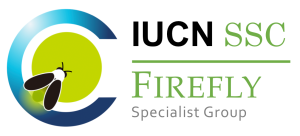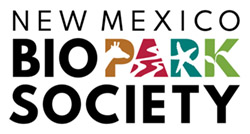The Firefly Atlas gathers and shares information about firefly species’ distributions across the United States and Canada via two sources: (1) registered participants who submit survey data and/or incidental observations and (2) a “legacy database” that houses species occurrence records transcribed from the published literature, researchers’ datasets, and museum collection labels, among other sources.
Submitted Information
Your personal information is voluntarily supplied by you when you register and submit data to the Firefly Atlas. By registering, you allow us to associate your firefly records with a unique identifier (login name or your name) to enable you to track and download your records and build your unique, virtual firefly collection. If you submit unusual records, we may request more details through the Firefly Atlas’ record comment feature or by email, but your email address and contact information will not be sold or distributed outside of the Firefly Atlas without your permission. Profile information allows us to improve the website for Firefly Atlas users in a more informed way.
Firefly records are the most important pieces of information that we collect. All details of an observation and its associated location (species, locality, time and date, etc.) are available to the public, unless an observation has been obscured by the observer. However, only information pertaining to firefly observations is available to Firefly Atlas users; no personal contact information is ever made public.
Photo Copyright
Copyright for all photo vouchers submitted to the Firefly Atlas are covered under the Creative Commons License: Attribution + Noncommercial and applicable Canadian and US Copyright Laws. If submitting or posting another photographer’s photos to the Firefly Atlas or elsewhere, you should have permission to do so. We will remove photographs if we are informed that appropriate permissions for their use on the Firefly Atlas have not been obtained or in case of disputes. Firefly Atlas administrators are not able to manually check the validity of copyright for every posted photograph.
Injury Liability
As a firefly observer or collector, you are fully responsible for your own safety and personal insurance in case of injury. The Firefly Atlas shall not be liable for damages or injuries you may incur while collecting and observing fireflies, whether personally or for the purpose of submission to the Firefly Atlas database. Please exercise great caution and care in the field when collecting data, including maintaining awareness of your surroundings and of others who are in the field with you. This is especially important for any data collection occurring at dusk or after dark. Heed all regulations regarding your location, and be mindful of public areas that officially close at sunset. Do not collect data on private property without full and informed consent of landowners. Inclusion of children in firefly observation and collection activities should involve full and appropriate supervision by responsible caregivers.
Firefly Collecting / Code of Ethics
The Firefly Atlas recognizes that collecting firefly specimens can be an important aspect of research and is sometimes necessary for scientific study, species verification, and documentation. While we encourage photo verification for fireflies where possible, especially in combination with other data such as date and time of occurrence, habitat associations, and flash patterns, we recognize that not all species can be determined from photographs and these additional details alone. For more information about how to take photographs of fireflies, please read our photography tips. If you will be collecting a voucher sample for scientific study, ensure that this is done with appropriate care and precaution. Whether you collect as part of Firefly Atlas activities, research, or to add to your personal collection, the Firefly Atlas recommends that collectors take the minimum number necessary so as not to stress or deplete a population. We recommend against collecting adult females since reproductive success is dependent on these animals and, for some taxa, the females cannot be identified to species. Different federal, state, and provincial agencies have different laws regarding the collection of insects. Please check with the relevant wildlife agency before collecting any animals. Collecting fireflies is forbidden in some areas, such as provincial, state, or national protected areas, possibly requiring you to obtain permits well in advance of travel. The Firefly Atlas cannot be held liable for costs incurred because of collection efforts under any circumstances.
Data Access Policy
The Firefly Atlas encourages researchers and other data users to disseminate findings in appropriate publications, based in whole or in part on Firefly Atlas data. The Firefly Atlas will give appropriate credit to the organization for its contribution(s) to the publication of such findings. All publication(s) or product(s) using any Firefly Atlas data are requested to adhere to the present policy.
Multiple uses of Firefly Atlas data
With the exception of obscured observations, the Firefly Atlas makes user-submitted observation data publicly available for use by any interested parties. Individuals who are interested in obtaining full survey data and/or legacy data (i.e., the non-Atlas data displayed on the Map) can request such data by contacting the Firefly Atlas at [email protected]. Unless otherwise arranged, any such data provided to researchers/authors/users are done so with the clear understanding that it will be used specifically for the purposes identified in the request (e.g. proposed publication, graduate thesis). If the researchers/users wish to use the same data for a purpose different from that of the original request, the researchers/authors must submit a new request.
Redistribution of the data
Without specific approval, no specially requested data should be distributed beyond the researchers/authors/users requesting the data. Furthermore, raw data (either the publicly available data or specially requested data) should not be made available for download through the Internet, although derived data (maps, tables) are usually acceptable (see Private Data). If you plan to present Firefly Atlas data on the Internet, please reach out to us with the the nature of your anticipated visualization(s).
Private Data
Some data in the database are obscured by users. The purpose of obscured data is to exclude the specific location of the sighting on the maps and data visualization tools available at the Firefly Atlas (and elsewhere), but we do make these data available to researchers for analysis (when requested). We created this feature for sensitive species uploads, and encourage users to only select ‘Yes’ for the Sensitive Data question for that purpose. If the specific location is the concern (e.g. private property, rather than the species being uploaded), we would encourage users to choose a nearby neutral location (park, intersection, public space, ideally within 250 m) for the location of their sighting and then use the appropriate data accuracy code [“How accurate is this location (in meters)”:]. However, no matter the purpose of use by the original user, nor the final species determination from the verification process, the data marked as Sensitive in the database and provided to researchers may not be distributed in any manner (either raw or derived) without the express permission of the original data provider (the user that uploaded the data to the Firefly Atlas).
Approval Process
Please email us if you would like access to full survey data and/or legacy data. Emails should outline the nature and topic of your request. If the proposal is acceptable, Firefly Atlas staff will approve the data release and inform the researchers/authors. Release of precise geographic locations of species at risk in particular will generally be restricted and only provided when the need has been clearly demonstrated.
Authorship and Acknowledgements
If a request for data includes proposed research with significant Firefly Atlas staff contributions, then agreement on the role of involved staff, joint authorship, and order of authors on publications must be reached before the data are released.
The researchers/authors agree to acknowledge the Firefly Atlas (as well as Atlas participants or partners when applicable) in all relevant publications using the statement provided below. Firefly Atlas review of manuscripts (or parts thereof) before submission to journals is requested as a courtesy, especially in cases where Firefly Atlas or client policy or operating practice is a subject of discussion or conclusions.
Firefly Atlas data should be cited as follows:
The Xerces Society. <year data was extracted>. Data accessed from Firefly Atlas, a collaborative website to track and conserve North America’s fireflies. Available from https://www.fireflyatlas.org. Accessed: <date>.
In addition, we require that the following statement be included in the acknowledgement section of any publication:
We thank the Firefly Atlas for supplying data and all of the participants who gathered data for the project.
If data retrieved from the Firefly Atlas are to be used for web-based products (maps, summaries, etc.), you must contact us for instructions on applicable contributor/partner logo(s) and website link(s).
Copyright
The Firefly Atlas and its partners retain the copyright on all data provided to researchers/authors/users, unless the copyright has been legally transferred to a client. The Firefly Atlas concept is copyright by founders at The Xerces Society.
Revocation of Privileges
Any researcher/author/user not abiding by this policy or the terms outlined herein may forfeit any future access to Firefly Atlas data.



